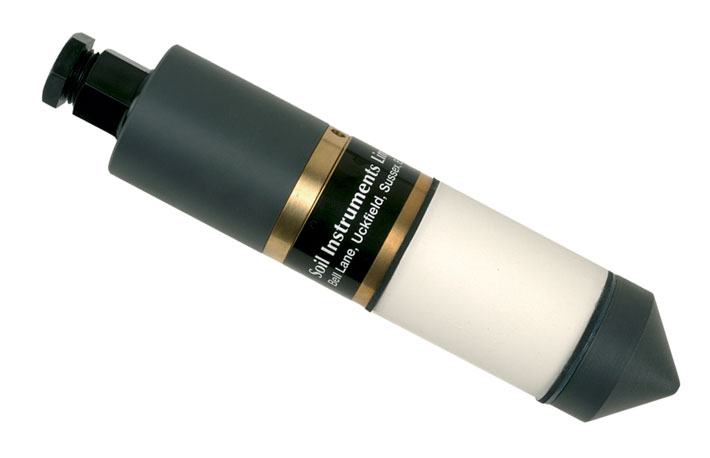Function Testing Pneumatic Piezometers

Figure 1. Soil Instruments Pneumatic Piezometer
1. Introduction
This article describes issues that may occur with a Soil Instruments Pneumatic Piezometer and ways to fault find and resolve any such issues.
2. Piezometer giving unstable readings
Such issues that can occur are that the Piezometers are giving unstable readings, for example a Piezometer could give a reading of 6.15 mH20 and when repeated it could give a reading of 6.5mH20. This can by symptomatic of liquid such as water entering the tubing and effecting the pressure needed to break the seal between the diaphragm and the tubing.
To attempt to remove the water from the tubing we recommend a nitrogen gas bottle is attached to the Piezometers and pumping nitrogen through the tubing at a slightly higher pressure through the Piezometers than normal. The nitrogen should be pumped through the faulty instruments for two to three hours in an attempt to remove any residual water in the system.
If after completing this process you receive stable readings for a reasonable period of time, however the Piezometers then return to giving unstable readings this would suggest that there is a leak in the system, either in the diaphragm or in the tubing. To resolve this a thorough inspection of the tubing should be completed and repairs made if such a leak is found.
3. Piezometer returning no readings
A second issue that can occur is when injecting nitrogen, even at pressure levels that are much higher than the expected amount of mH20, no return reading is given. This can be symptomatic of either the tubing becoming blocked or there being a large amount of liquid in the tubing that is blocking the nitrogen gas from returning.
If your Piezometers are experiencing this issue we recommend pumping nitrogen for two to three hours through the system in an attempt to remove any water that may have built up in the tubing. Nitrogen pumped through the system for this length of time should dry out any liquid found in the tubing. The diaphragms are made to withstand pressures of up to 100 psi and nitrogen gas being pumped through the system should not exceed this to ensure that no damage is incurred to the diaphragm of the Piezometer.
This article describes issues that may occur with a Soil Instruments Pneumatic Piezometer and ways to fault find and resolve any such issues.
2. Piezometer giving unstable readings
Such issues that can occur are that the Piezometers are giving unstable readings, for example a Piezometer could give a reading of 6.15 mH20 and when repeated it could give a reading of 6.5mH20. This can by symptomatic of liquid such as water entering the tubing and effecting the pressure needed to break the seal between the diaphragm and the tubing.
To attempt to remove the water from the tubing we recommend a nitrogen gas bottle is attached to the Piezometers and pumping nitrogen through the tubing at a slightly higher pressure through the Piezometers than normal. The nitrogen should be pumped through the faulty instruments for two to three hours in an attempt to remove any residual water in the system.
If after completing this process you receive stable readings for a reasonable period of time, however the Piezometers then return to giving unstable readings this would suggest that there is a leak in the system, either in the diaphragm or in the tubing. To resolve this a thorough inspection of the tubing should be completed and repairs made if such a leak is found.
3. Piezometer returning no readings
A second issue that can occur is when injecting nitrogen, even at pressure levels that are much higher than the expected amount of mH20, no return reading is given. This can be symptomatic of either the tubing becoming blocked or there being a large amount of liquid in the tubing that is blocking the nitrogen gas from returning.
If your Piezometers are experiencing this issue we recommend pumping nitrogen for two to three hours through the system in an attempt to remove any water that may have built up in the tubing. Nitrogen pumped through the system for this length of time should dry out any liquid found in the tubing. The diaphragms are made to withstand pressures of up to 100 psi and nitrogen gas being pumped through the system should not exceed this to ensure that no damage is incurred to the diaphragm of the Piezometer.
